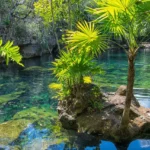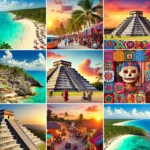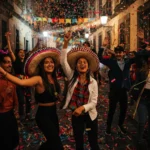Overview of Easter Island
Easter Island, a remote Chilean territory in the Pacific Ocean, is a unique destination steeped in mystery and rich cultural history. Famous for its enigmatic moai statues, the island offers a profound glimpse into the ancient Rapanui civilization. Key attractions include the Rapa Nui National Park, home to the iconic moai and Ahu Tongariki, the largest ceremonial platform. Anakena Beach, with its white sands and historical significance, offers relaxation and cultural exploration. The Orongo Ceremonial Village, perched atop the Rano Kau volcano, provides insights into the island’s fascinating Birdman cult. Visitors can immerse themselves in the local culture through the Tapati Rapa Nui festival, showcasing traditional music, dance, and sports. Hiking the island’s volcanic landscapes, exploring caves like Ana Kakenga, and enjoying the unique fusion of Polynesian and Chilean cuisine further enrich the travel experience. Easter Island, with its blend of natural beauty and intriguing history, is an unparalleled destination for those seeking adventure and cultural enrichment.
1. Rapa Nui National Park
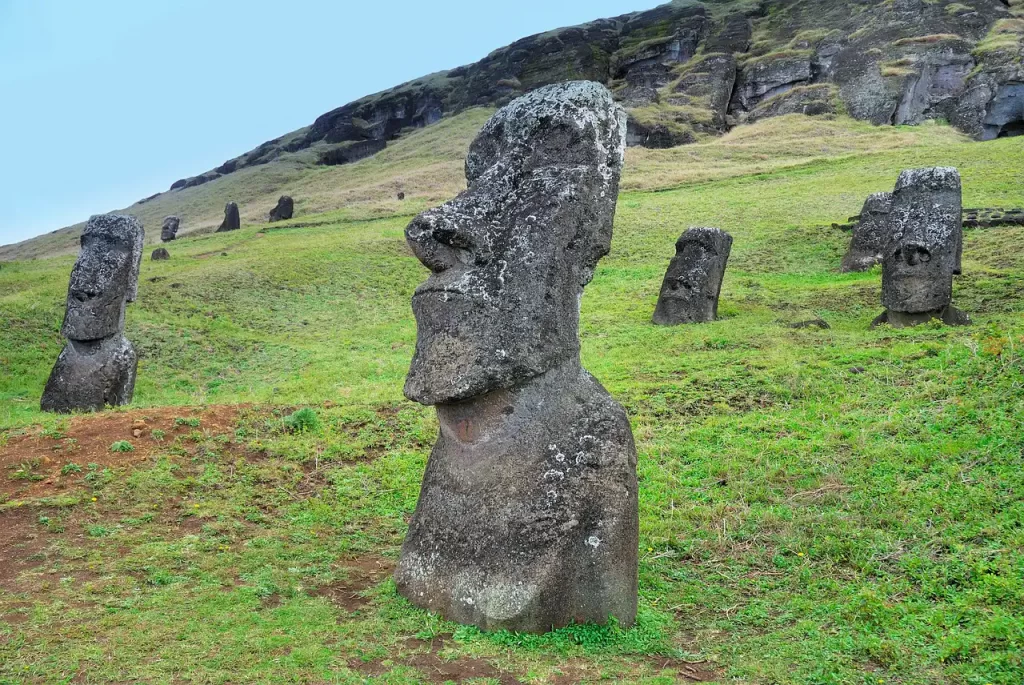
Rapa Nui National Park, a UNESCO World Heritage site, is the centerpiece of Easter Island’s cultural heritage. The park is home to the world-famous moai statues, colossal stone figures that have baffled historians and archaeologists for centuries. These statues, carved by the Rapanui people between the 13th and 16th centuries, are a testament to the island’s rich and enigmatic past. Visitors can explore various ahu (ceremonial platforms), with Ahu Tongariki being the most impressive, featuring 15 towering moai.
Rano Raraku, a volcanic crater near the park, served as the moai quarry. Here, visitors can see partially carved statues, providing a glimpse into the ancient stone-carving techniques. This site helps unravel the mystery of how the Rapanui people might have transported these enormous figures across the island.
The park also offers guided tours, providing insights into the local legends and history. Each moai has its own story, contributing to the island’s mystical allure. The preservation of these statues is a key focus, reflecting the cultural significance and respect the locals have for their ancestors.
2. Anakena Beach
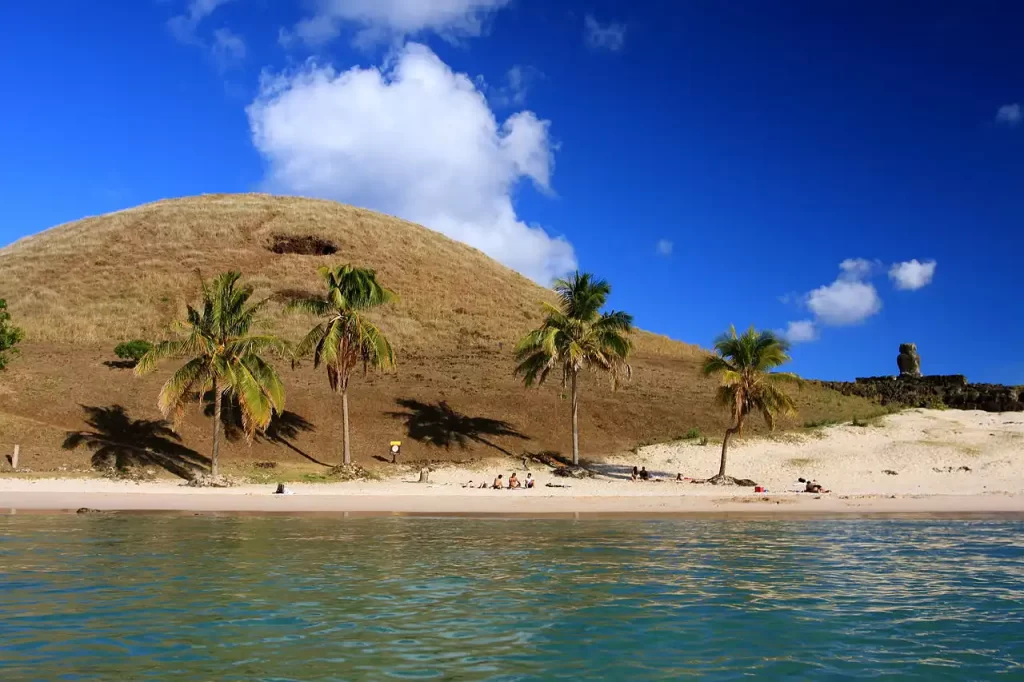
Anakena Beach, a serene oasis, contrasts the island’s rugged volcanic landscapes with its soft, white sands and swaying palm trees. This beach isn’t just a tropical paradise for sunbathing and swimming; it’s steeped in history. Nearby, visitors can find moai statues, reminding them of the island’s ancient past.
The beach has a mythical significance, believed to be the landing place of Hotu Matu’a, the first king of Easter Island. The presence of the moai at Ahu Nau Nau, a well-preserved ceremonial platform by the beach, adds a spiritual dimension to this picturesque location.
Anakena is also a great spot for picnicking and enjoying local food. The beach facilities include showers and small stalls selling snacks and handicrafts. The calm waters make it ideal for swimming, especially for families with children.
3. Orongo Ceremonial Village
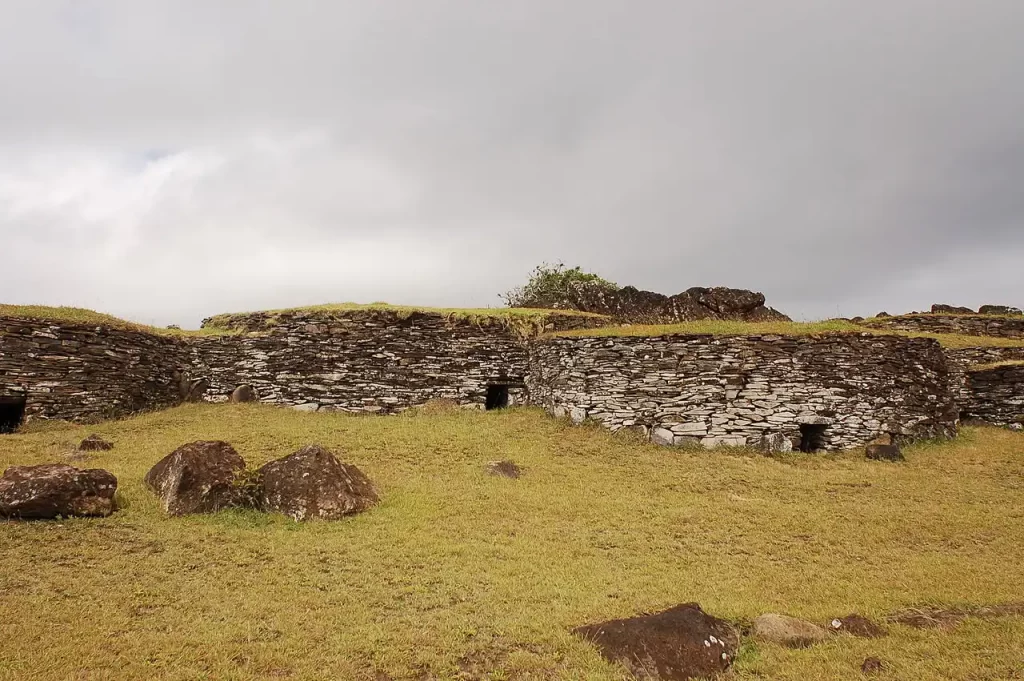
Orongo, a stone village perched on the edge of the Rano Kau volcano crater, offers a unique window into the island’s later historical period. This site was central to the Birdman cult, a significant part of Rapanui culture. The competition involved retrieving the first egg of the season from the nearby islet of Motu Nui, a risky endeavor that tested the participants’ bravery and endurance.
The village comprises stone houses with low, sod-covered roofs, designed to withstand strong winds. The petroglyphs found here depict the Birdman and other symbols associated with the cult, providing valuable insights into the beliefs and rituals of the Rapanui people.
Orongo also offers breathtaking views of the volcanic crater’s freshwater lake and the vast Pacific Ocean. The contrast between the lush crater interior and the barren outer slopes of the volcano is striking, symbolizing the island’s diverse ecological system.
4. Hiking and Exploring
Easter Island isn’t just about historical and cultural exploration; it’s also a haven for nature lovers and adventure seekers. The hike to the summit of Maunga Terevaka, the island’s highest point, is a must-do. This hike offers panoramic views of the entire island, the vast ocean, and neighboring islets.
Exploring the island’s caves is another adventure not to be missed. Ana Kakenga, known as the Cave of Two Windows, offers a glimpse into the island’s subterranean world and stunning coastal views from its openings. Ana Te Pahu, or the Banana Cave, is part of an extensive underground lava tube system, surrounded by lush banana plantations.
5. Cultural Experiences
Embracing the Rapanui culture is an integral part of the Easter Island experience. The Tapati Rapa Nui festival, held annually in February, is a vibrant celebration of local traditions, including music, dance, and ancient sports. It’s an immersive way to experience the island’s living culture.
The Father Sebastian Englert Anthropological Museum provides an informative backdrop to the island’s history. It houses a collection of artifacts, including wooden carvings, traditional tools, and a rare female moai, offering deeper insight into the Rapanui people’s way of life.
6. Local Cuisine
Easter Island’s cuisine is a delightful fusion of Polynesian and Chilean flavors. Seafood is a staple, with dishes like ceviche made from freshly caught fish. Po’e, a sweet dessert made from pumpkin, banana, and flour, is a traditional treat. Tuna empanadas are a must-try, combining local flavors with a popular South American dish.
Restaurants on the island range from casual eateries to upscale dining options, offering something for every palate. Visitors should also try the locally brewed Mahina beer, a perfect accompaniment to any meal.
7. Sustainable Tourism
Sustainable tourism is crucial on Easter Island due to its isolated location and fragile ecosystem. Visitors are encouraged to respect the natural environment and local customs. This includes following guidelines while visiting archaeological sites, reducing plastic use, and supporting local businesses.
The Rapanui community is actively involved in conservation efforts, and tourists can contribute by participating in eco-friendly activities and staying in environmentally responsible accommodations.
8. Travel Tips
Easter Island, located over 2,000 miles from the Chilean mainland, is accessible by flights from Santiago. The best time to visit is during the Southern Hemisphere summer, though the island’s subtropical climate makes it a year-round destination.
Accommodation options vary from budget guesthouses to luxury resorts, catering to different travel preferences. It’s advisable to book in advance, especially during the peak season.
9. Language and Currency
While the official language is Spanish, many locals speak English, especially in tourist areas. The currency used is the Chilean Peso, and it’s recommended to carry cash as not all places accept credit cards.
Frequently Asked Questions (FAQ)
- What are the moai statues?
- The moai are large stone figures carved by the ancient Rapanui people, representing their ancestors and holding cultural and spiritual significance.
- Can you swim at Anakena Beach?
- Yes, Anakena Beach has calm waters suitable for swimming.
- What is the Birdman cult at Orongo?
- A historical competition where participants retrieved the first seabird egg of the season from a nearby islet, symbolizing leadership and fertility.
- What is the best way to explore the island?
- Renting a car or bike, guided tours, and hiking are popular ways to explore the island’s diverse landscapes and historical sites.
- Are there any cultural festivals on Easter Island?
- Yes, the Tapati Rapa Nui festival, celebrated annually in February, showcases local traditions, music, dance, and sports.







